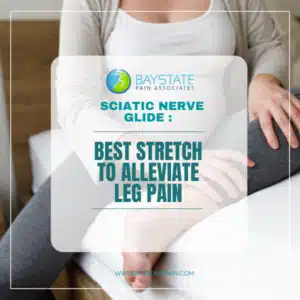The Common Myths of Back Pain :
Problems | Causes | Treatments
The correct treatment of back problems is not only important, but also requires a well-rounded education. In order to ensure the success of proper treatment, we will focus on the common misconceptions about back problems.
#1 The Myths and Reality of Back Pain and Back Problems
Myth: Physical back pain may lead to partial or total paralysis.
Truth: In order for paralysis to happen, sensitive nerves at the bottom of the spine like the spinal cord or cauda equina must be adversely affected to the point that the nerve transmissions of sensation and movement become less or stopped entirely. This type of paralysis is relatively rare.
Myth: Back pain is always the result of a physical injury.
Truth: Any change in back pain after an accident, such as a sports injury or a fall, should be evaluated.
Myth: Anyone with severe back pain should get checked out by a doctor.
Truth: Some patients may experience an immense amount of pain for an otherwise mundane muscle pull, while others with a herniated disc near a spinal nerve may not feel anything at all.
Myth: Back pain has nothing to do with your genetics.
Truth: Evidence shows that people with a specific type of back condition, such as injuries to their muscles and bones, might be genetically inclined to such problems. The only way we can detect these changes is through the following:
- Depletion of the hydration level of discs
- Change in disc height
- The presence of a projection of bone on vertebrae or a spinal facet joint.
When someone inherits these conditions, it is often labeled as lumbar degenerative disc disease or osteoarthritis of the spine.
Myth: When there is no apparent problem with the back, it must be psychological.
Truth: With back pain, there is usually no single diagnostic test, and doctors usually have to rely on combinations of medical imaging and clinical diagnostic tests to come up with a specific lower back problem. Persistent or concerning back pain often calls for a qualified spine specialist to be consulted, in order to rule out serious problems.
#2 Myths about Causes of Back Pain and Back Problems
Learning the truth behind the myths from a trusted source is important for treating back problems in a medically accurate way and preventing further damage to the tissues.
If you want to understand the myths, speak to a trustworthy person first to prevent further damage to the tissue.
Myth: pregnancy Complains of Lower Back Pain
Truth: Tumor pregnancy can cause back pain to occur in the later stages of pregnancy, during the second or third trimester.
Myth: Gas Is Associated With Back Pain
Truth: Sometimes there is some mild to moderate discomfort in the upper body and that can include, but not be limited to, back pain. A backache usually only refers to pain that is created by bloating and gas if the back pain happens in the same area as the discomfort in the upper body.
Myth: Sitting causes chronic back pain.
Truth: In order to sit comfortably, one should find an ergonomically supportive posture, this prevents stress on joints and causes the person to not experience pain.
Myth: The Causes of Back Pain Have Nothing to Do with Constipation
Truth: Irritable bowel syndrome can, in some cases, lead to irritation of the nerves in the pelvic area, which may also cause back pain.
Myth: Stress does not affect back pain, in general.
Truth: Stress can lead to both depression and anxiety, which are thought to be the most common anxiety-related disorders associated with lower back pain.
Myth: You Can Still Get Back Pain Even If You Have Healthy Kidneys
Truth: If there are certain kidney-related issues that result in intense back pain, you might be the type of person who would need to visit the emergency room.
#3 Myths about Treatment for Back Pain and Back Problems
Some myths about the various treatments for back pain. Here are the accurate facts that combat those myths.
Myth: Back pain gets worse after a chiropractic adjustment.
Truth: The effectiveness of a chiropractic treatment will depend on the education, license, and experience of the doctor, and on the appropriate diagnosis. With manual techniques such as chiropractic therapy, your chiropractor can help you to achieve the following goals:
- Help to minimize pain
- Improve the health of soft tissues
- Release the pressure and tension within joints
- Rehabilitate joint movements
Myth: Massage Worsens Back Pain.
Truth: One treatment option for lower back pain is therapeutic massage. When treating back pain, massage can offer relief in the following ways:
Helping you to be more at ease both physically and mentally
Essentially, exercise leads to an increase in the levels of natural pain-fighting hormones, the endorphins.
Myth: It’s difficult for a herniated disc to heal without surgery.
Truth: A herniated disc can result in significant pain in the back if it doesn’t stay within the spine, which would cause nerve discomfort.
For most people, the pain resolves itself without lasting issues. Studies have found that over 85% of patients with acute herniated discs have resolution of symptoms within 8 to 12 weeks.
To combat symptoms not resolved by surgery, doctors might also offer physical therapy, manipulation, medication, and injection treatments.
Other pain treatments that are effective in treating neck disc herniation are used to control pain, reduce pain, and even eliminate pain altogether.
Myth: The pain is never-ending and always gets worse.
Truth: Back pain occurs for almost everyone at some point in their lifetime, and for most people, it goes away in a few months.
For those who have had a chronic backache that’s lasted 3 months or longer, this condition may happen again with occasional intervals of relief.
When a person experiences pain, medications may help treat the back injury. Changes in their lifestyle can help provide relief.
Occasionally, one can have recurrences or flare-ups over time. Treatments, however, can help one avoid or reduce their frequency, as well as reduce their severity and/or one’s pain.
- 1.Sabino J, Grauer JN. Pregnancy and low back pain. Curr Rev Musculoskelet Med. 2008;1(2):137-141. doi:10.1007/s12178-008-9021-8
- 2.Abbassian A, Minaee B, Nikbakht Nasrabadi A, Rostamian A, Shirzad M. Gas as a cause of spinal pains: a possible new syndrome. Iran J Public Health. 2013;42(1):110-112.
- 3.Pavilack, L., Alstedter, N. & Wisniewski, E. Pain-free posture handbook : 40 dynamic easy exercises to look and feel your best. Berkeley, CA: Althea Press; 2016.
- 4.Doroff CE, Langford EL, Ryan GA, Snarr RL. Effects of Active Sitting on Reading and Typing Task Productivity. Int J Exerc Sci. 2019;12(5):1216-1224. Published 2019 Nov 1.
- 5.Wong KC, Lee RY, Yeung SS. The association between back pain and trunk posture of workers in a special school for the severe handicaps. BMC Musculoskelet Disord. 2009;10:43. Published 2009 Apr 29. doi:10.1186/1471-2474-10-43
- 6.Alamin TF, Agarwal V, Zagel A, Qeli A. The effect of standing vs. variants of the seated position on lumbar intersegmental angulation and spacing: a radiographic study of 20 asymptomatic subjects. J Spine Surg. 2018;4(3):509–515. doi:10.21037/jss.2018.08.03
- 7.Kwon Y, Kim JW, Heo JH, Jeon HM, Choi EB, Eom GM. The effect of sitting posture on the loads at cervico-thoracic and lumbosacral joints. Technol Health Care. 2018;26(S1):409–418. doi:10.3233/THC-174717
- 8.Arai YC, Shiro Y, Funak Y, et al. The Association Between Constipation or Stool Consistency and Pain Severity in Patients With Chronic Pain. Anesth Pain Med. 2018;8(4):e69275. Published 2018 Aug 11. doi:10.5812/aapm.69275
- 9.Tantawy SA, Kamel DM, Abdelbasset WK, Elgohary HM. Effects of a proposed physical activity and diet control to manage constipation in middle-aged obese women. Diabetes Metab Syndr Obes. 2017;10:513-519. Published 2017 Dec 14. doi:10.2147/DMSO.S140250
- 10.Ellegaard H, Pedersen BD. Stress is dominant in patients with depression and chronic low back pain. A qualitative study of psychotherapeutic interventions for patients with non-specific low back pain of 3-12 months’ duration. BMC Musculoskelet Disord. 2012;13:166. Published 2012 Sep 6. doi:10.1186/1471-2474-13-166
- 11.Alturkistani LH, Hendi OM, Bajaber AS, et al. Prevalence of Lower Back Pain and its Relation to Stress Among Medical Students in Taif University, Saudi Arabia. Int J Prev Med. 2020;11:35. Published 2020 Mar 16. doi:10.4103/ijpvm.IJPVM_264_19
- 12.Nagayama M, Yanagawa Y, Aihara K, et al. Analysis of non-traumatic truncal back pain in patients who visited an emergency room. Acute Med Surg. 2014;1(2):94-100. Published 2014 Jan 28. doi:10.1002/ams2.16
- 13.Watkins CT, Tao C, Yochum TR. Renal cell carcinoma in a 44-year-old man: an etiology for low back pain. Journal of Manipulative and Physiological Therapeutics. 2009;32(7):597-600.
- 14.Rectenwald R. A case study of back pain and renal cell carcinoma. J Chiropr Med. 2008;7(1):24-27. doi:10.1016/j.jcme.2008.01.001
- 15.Kim K-H, Kim DH. Diagnosis and Treatment of Spinal Pain. In: Minimally Invasive Percutaneous Spinal Techniques. Elsevier; 2010:1-28.
- 16.Fairbank J, Mallen C. Cauda equina syndrome: implications for primary care. Br J Gen Pract. 2014;64(619):67–68. doi:10.3399/bjgp14X676988
- 17.Petr O, Glodny B, Brawanski K, et al. Immediate Versus Delayed Surgical Treatment of Lumbar Disc Herniation for Acute Motor Deficits. SPINE. 2019;44(7):454-463. doi:10.1097/brs.0000000000002295
- 18.Rider LS, Marra EM. Cauda Equina And Conus Medullaris Syndromes. [Updated 2020 Aug 10]. In: StatPearls [Internet]. Treasure Island (FL): StatPearls Publishing; 2020 Jan-. Available from: https://www.ncbi.nlm.nih.gov/books/NBK537200/
- 19.Williams FM, Bansal AT, van Meurs JB, et al. Novel genetic variants associated with lumbar disc degeneration in northern Europeans: a meta-analysis of 4600 subjects. Ann Rheum Dis. 2013;72(7):1141-1148. doi:10.1136/annrheumdis-2012-201551



